23 Years of the Skerry: A Retrospective
By John C. Harris
May 2024
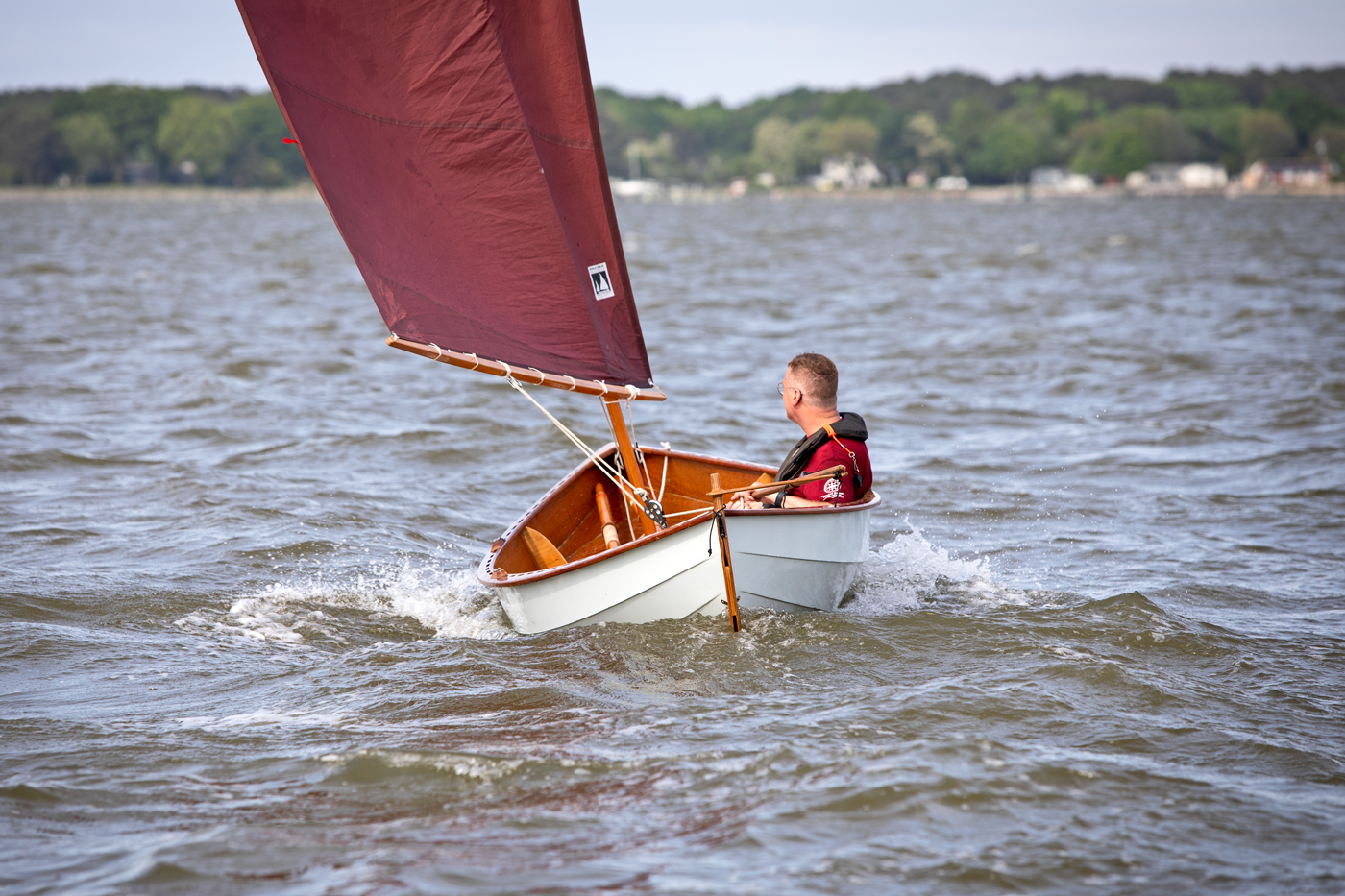 |
| The Skerry's a well-balanced boat in all conditions. |
Here's a bit of Skerry sailing video.
And an article from Small Boats Nation.
The first sketches of the boat that would become the Skerry date from 2000. There was an early prototype that was less sleek, with a deeper midsection. I was attempting to create a boat that had some of the utility of a Maine Peapod. Peapods are the shapely and rugged indigenous doubled-ended fishing craft of Maine. What did not dawn on me until the first Skerry prototype was built was that enormous weight is the essential character of a Maine peapod. Making THAT design alchemy work with stitch-and-glue would require 20 years of patient (and rewarding) development.
The first prototype was not the peapod I was looking for. Shifting southwest along the New England coast a bit, we reach the haunt of the indigenous American dory, with its narrow bottom, wide lapping planks, and sharp flare amidships. These lightweight and easy-to-build smallcraft are a better model for an easy-to-build kit boat. When I drew a lapstrake dory with three wide laps per side and a sharp stern—easier to build than a transom stern—the result was a dory with a strong Nordic flavor. THIS became the Skerry.
As someone whose eyes mist with longing whenever I see a nice faering or oselvar, I thought I had a winning set of lines.
And so I did. It’s one of the best boats I’ve ever designed, and there are more than a thousand afloat.
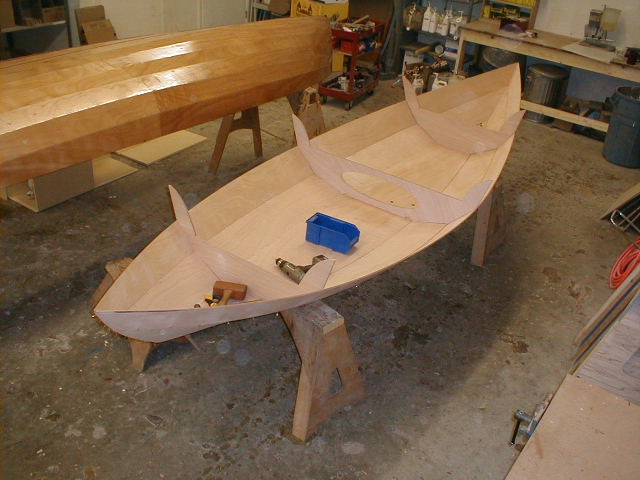 |
|
Skerry Hull #1 under construction at CLC back in 2001. Three frames and seven planks proved to be a winning formula for a quick build and great performance. |
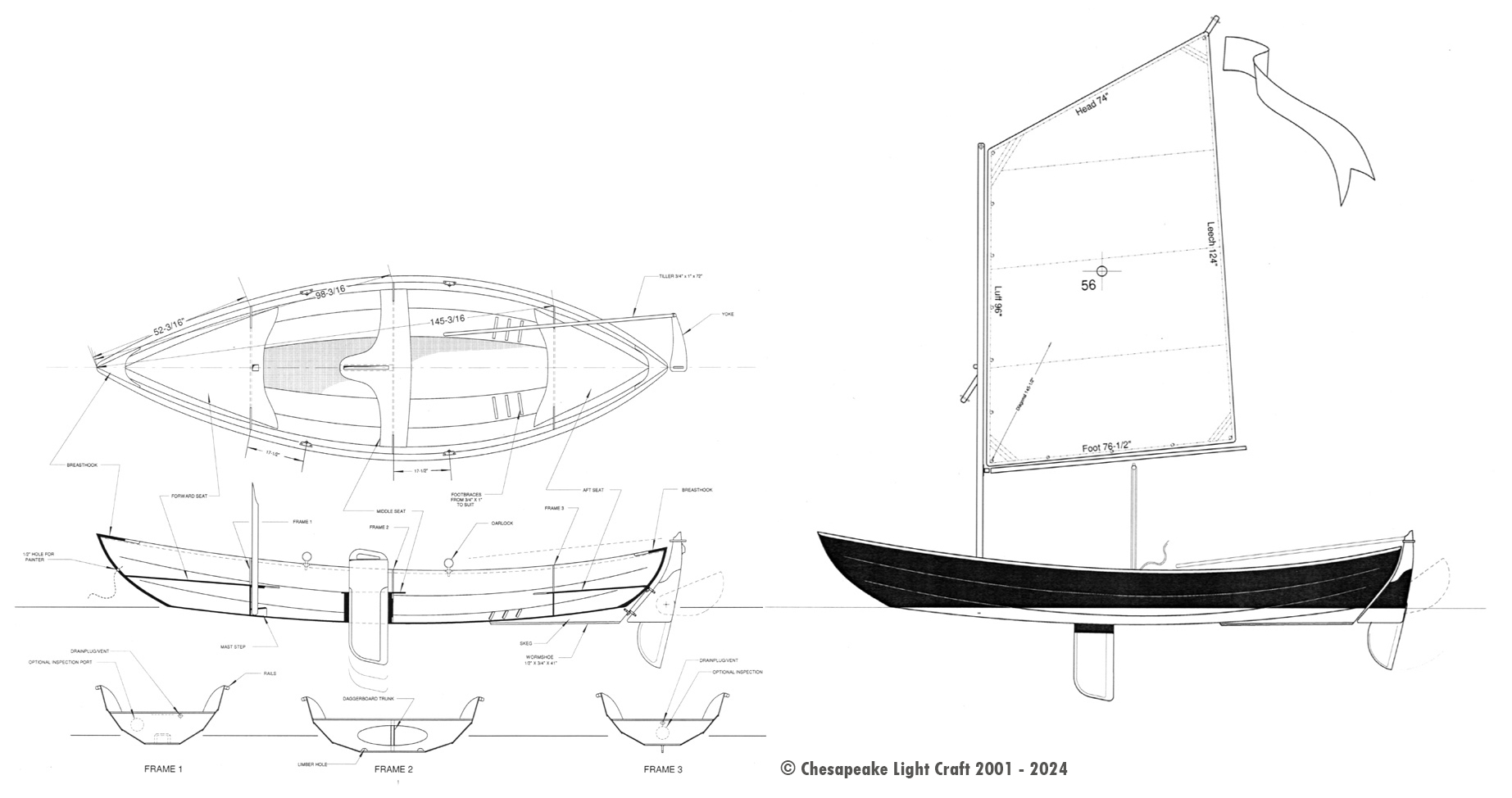 |
|
The final drawings, dating from November 2001, showing the Norse-geometry spritsail. |
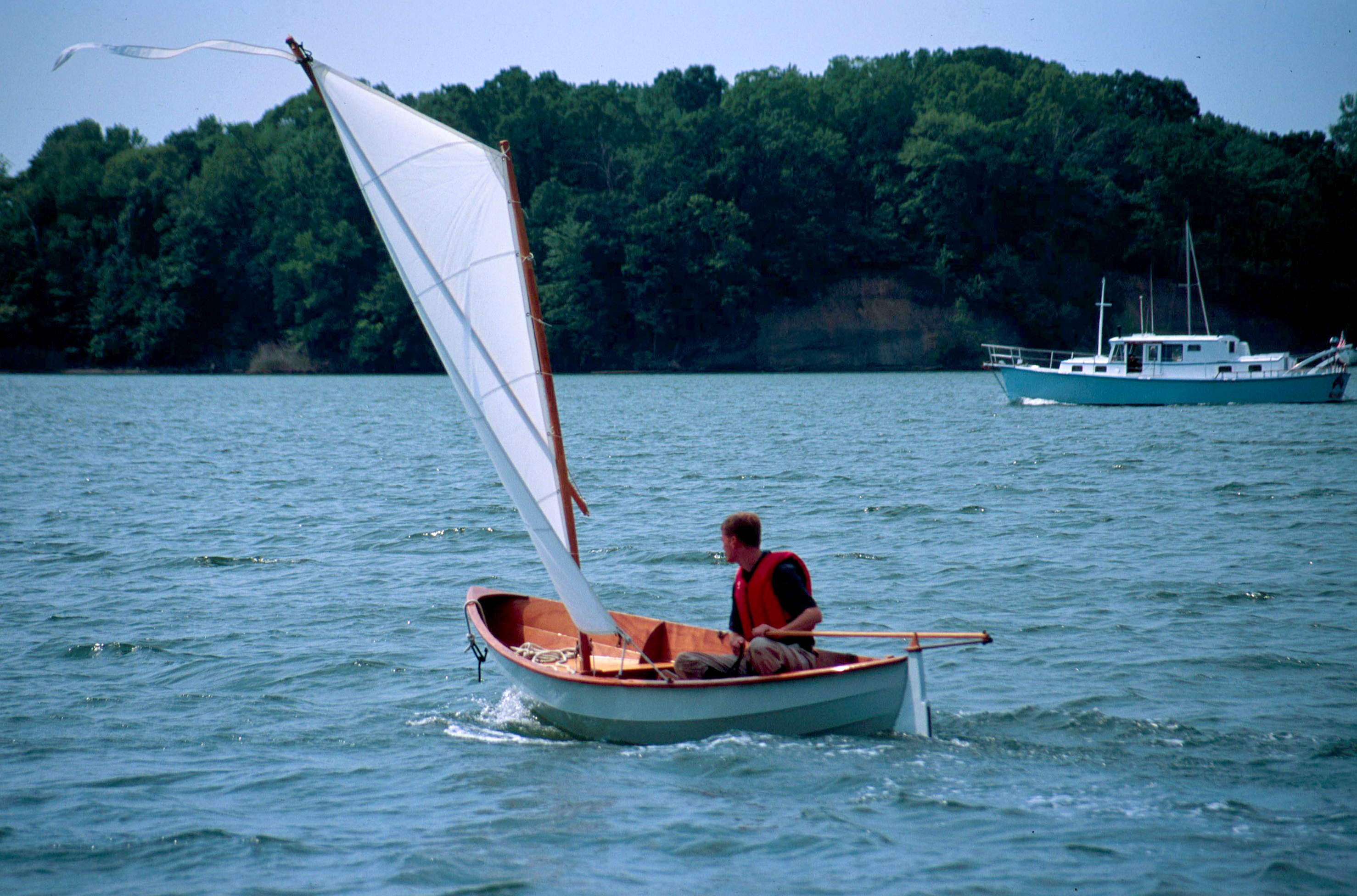 |
|
Skerry #1 was first tried with a loose-footed spritsail, set on an Eastport Pram mast. The idea was to keep the cost down by using the dinghy's mast, mast step, and daggerboard. But too much performance was lost to twist in the sail. Before it went into production, the Skerry got a taller mast, a boom, and its own (deeper) daggerboard. |
 |
|
The spritsail LOOKS small in the drawings, leading to much whining on the internet when the design was released. What the whiners missed was the Skerry's light weight: 40 pounds less than a Laser, with a more easily-driven hull. The SA/D compares favorably to the Laser. Even with 56 square feet of sail, the Skerry is a terrific ghoster in light air. (I'm still irritated, 23 years later.) This is one of my favorite pictures of the Skerry. I'm in the midst of roll-tacking the boat in very light air. |
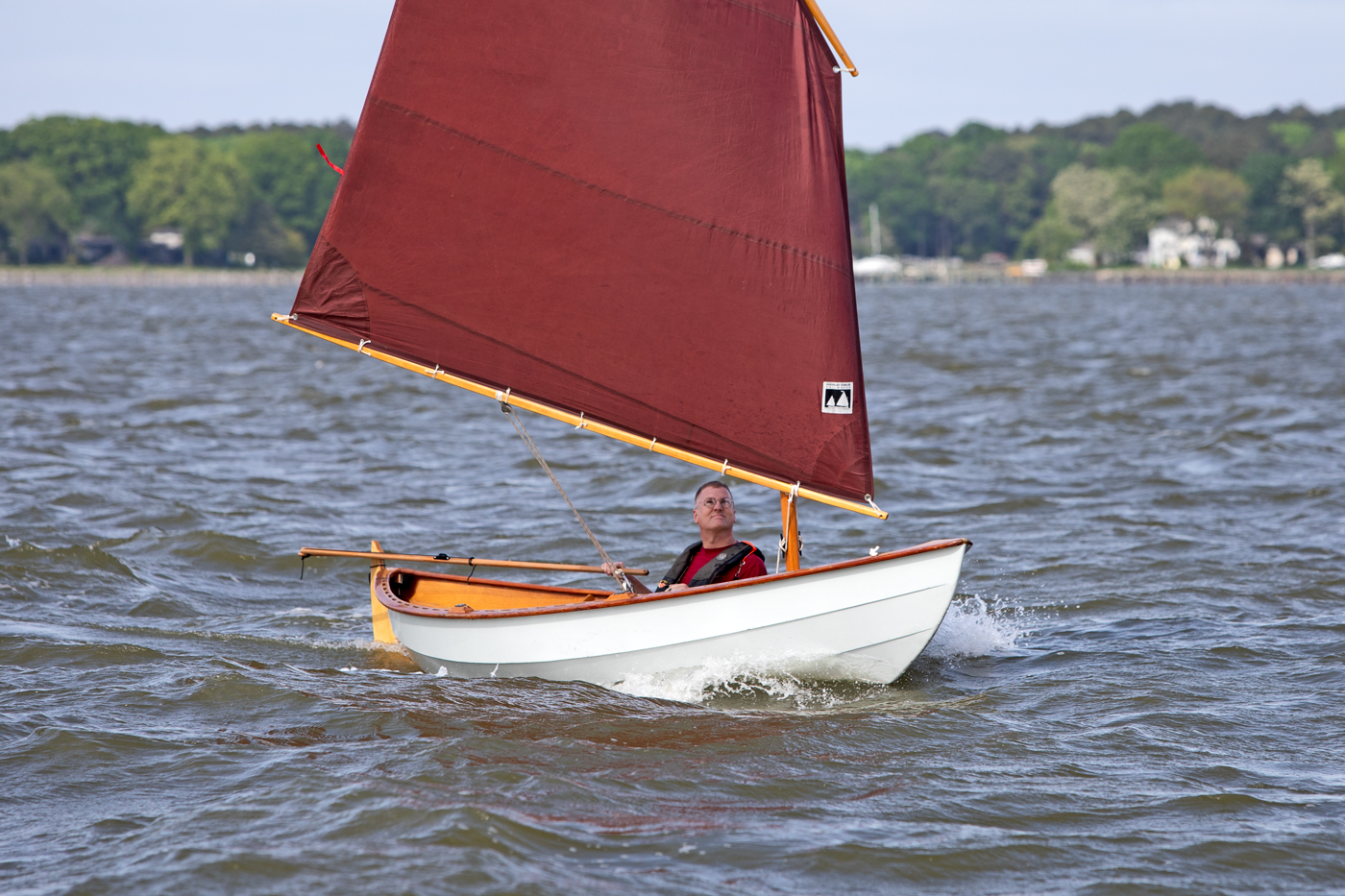 |
|
But enough about the spritsail rig. The disadvantages of the sprit rig are that it's difficult to set up or douse while under way, and it's not very practical to reef. Unless you're quite nimble, you need to be pulled up on a beach to set and strike the rig—as you do in a Laser. The switch to a balanced lug sail addresses all of these concerns. While I've never had a good side-by-side test, the lugger is almost certainly a little faster than the sprits'l rig, as it's slightly larger and has that clean luff for upwind work. It did take a period of experimentation to get the balance of the lug sail just-so when set on the same mast as the spritsail. |
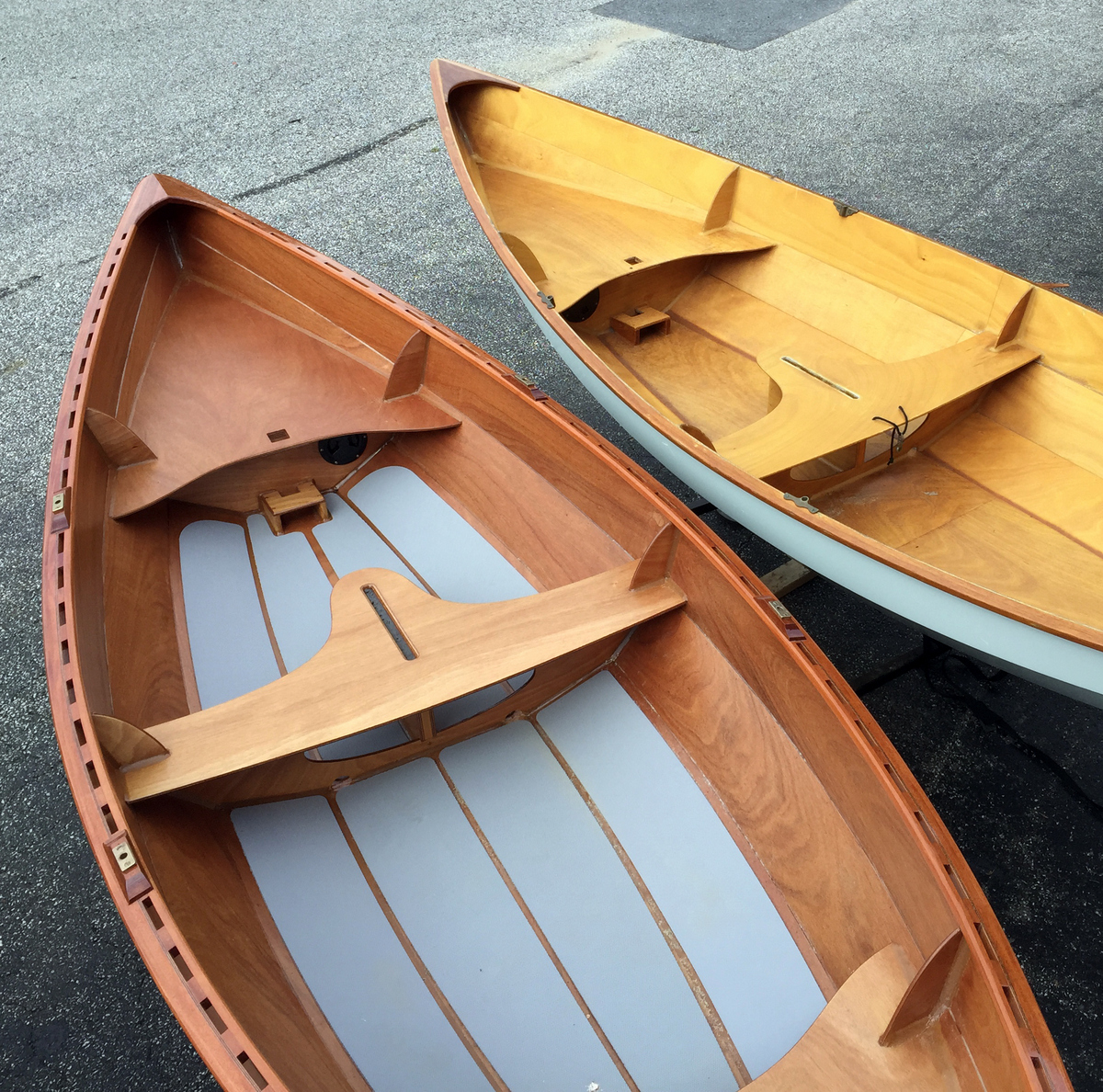 |
|
Much of what people like about the Skerry—speed and simplicity of construction, light weight, and the performance advantages thereof—are the result of features they don't like, specifically the rather spare fit-out. The interior is simple bordering upon austere. But the modest parts-count was deliberate, and in fact probably explains the boat's success. It has kept the cost down: in 2002 you could get the base hull and daggerboard trunk for $950, and to this day a Skerry doesn't cost much more than an iPhone subscription. Because the Skerry is quick and easy to build, amateurs are more likely to make it through to launch day. For builders uncomfortable with the Skerry's unabashed...plywoodness, she dresses up nicely. Inwales, floorboards, and other bits of interior furniture are common additions. I particularly like the spacered inwale, as seen in the foreground above. When I get around to having one of these for my own use, I'll add some storage and lead all of the running rigging back to the underside of the center thwart. |
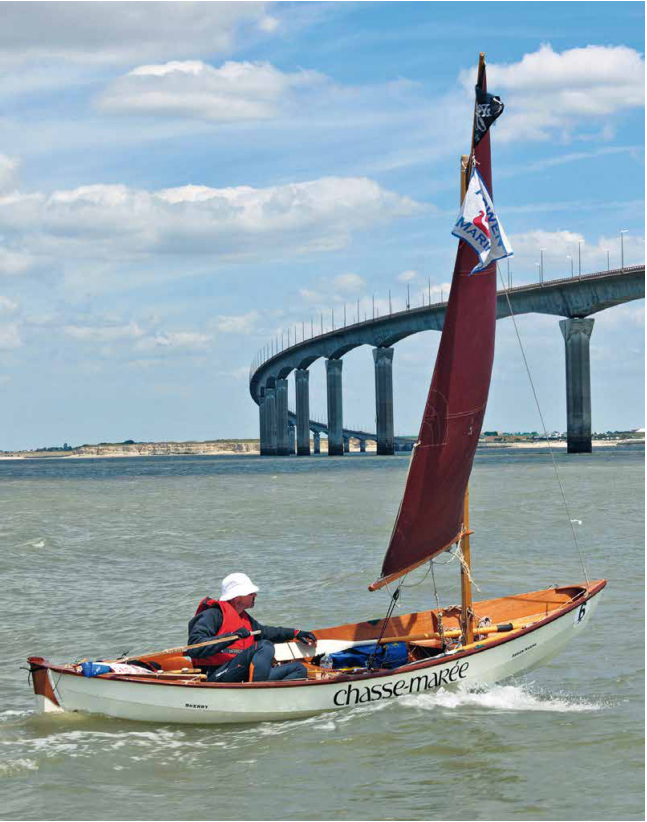 |
|
Skerries have enjoyed popularity in France, no doubt thanks to the efforts of our agent there, Emmanuel Conrath and Arwen Marine. French-built Skerries often sport a sophisticated outfitting, and they are used for overnight beach-cruising. |
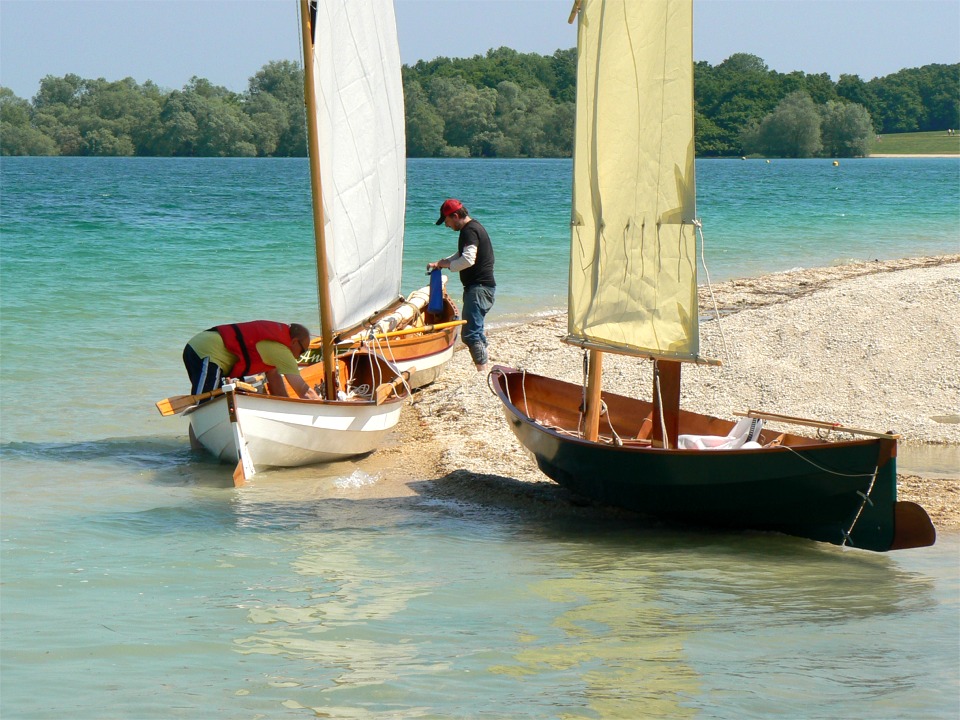 |
|
A trio of well-equipped French-built Skerries, on retreat. The builder of the green boat evidently preferred the rudder blade swapped 180 degrees from the way I see it. |
 |
|
Recently we watched the weather for an afternoon with a solid 15-20 knots of breeze. It'd been ages since we'd taken the time for a photo shoot of the Skerry doing what she loves best: playing in the wind and waves. The flared sides keep her dry, and stability builds quickly as she heels, with the happy result that hiking is not necessary, even in this much wind. I'd have been a little more comfortable with a reef tied in, but this older sail didn't have one. (All lug sails now come with a single reef as standard.) |
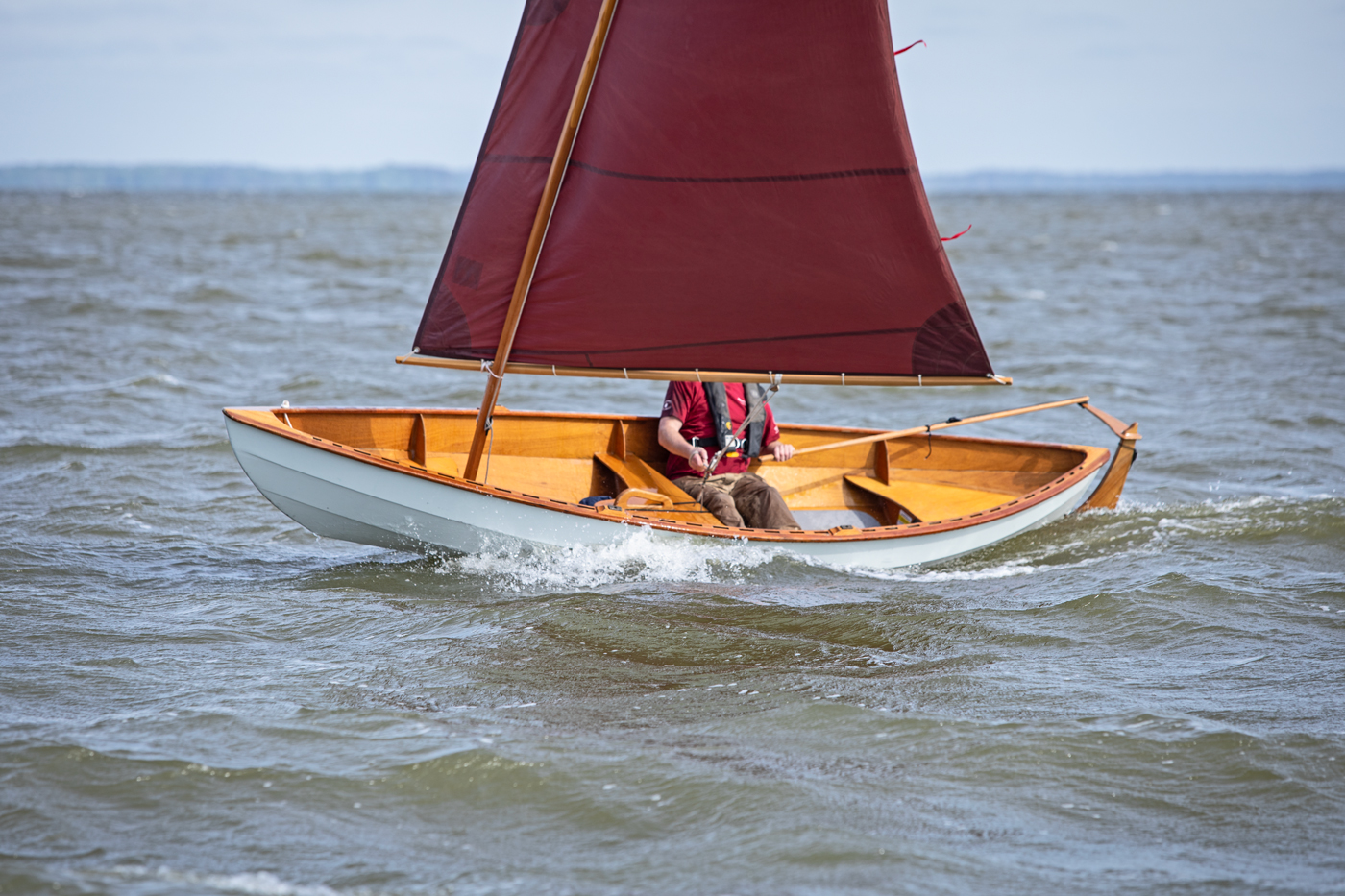 |
|
As a designer, I was brought up to believe that fine-ended boats are slow when pushed hard. I'm sure that's true with heavy boats: with a pointed stern like the Skerry's, a heavy boat will drag a big stern wave behind her. But a light boat like the Skerry just offers no resistance at all. In the photo she's making 6 or 7 knots without any fuss and without much effort on my part. That's an S/L of 1.8. And that is fast. |
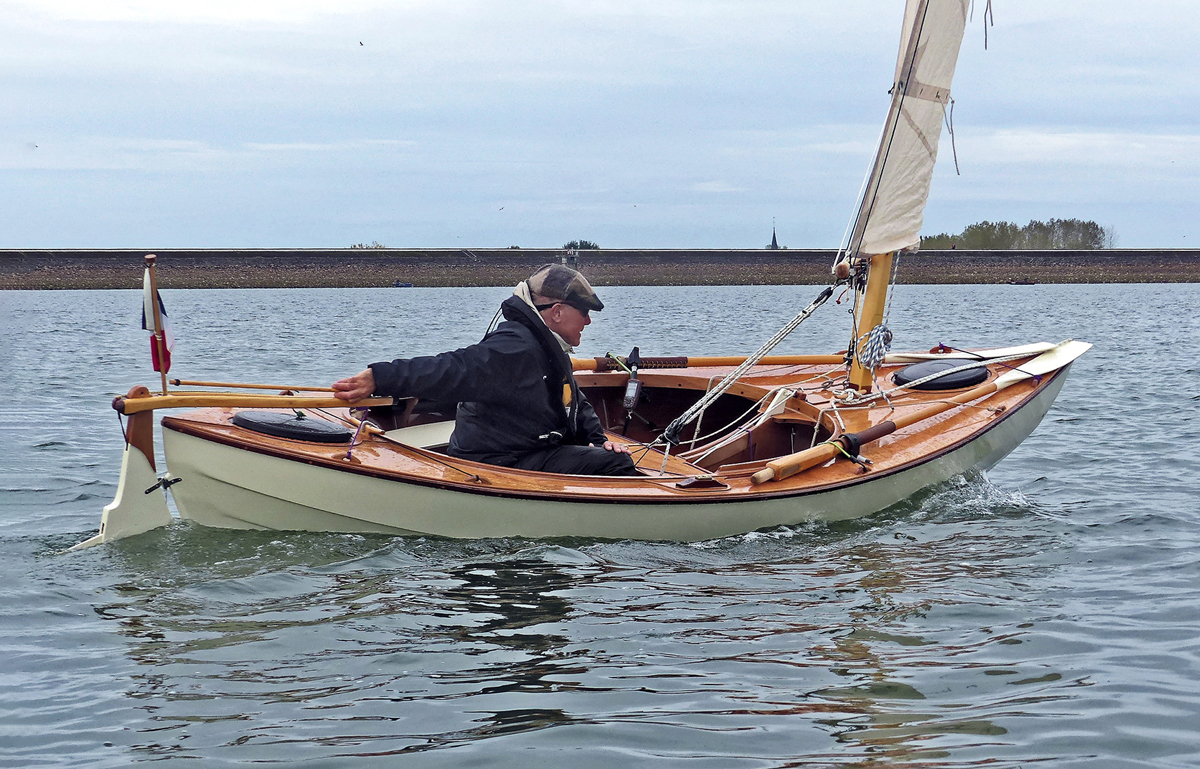 |
|
The Skerry's long legs and genial handling led to requests for an expedition version. The most logical thing to do with a cruising version of the Skerry was to put a deck on it. I added six inches of beam and a pivoting centerboard for good measure. Renamed the "Skerry Raid," it's proven popular among beach-cruising enthusiasts. This one's based in France. |
 |
|
The Skerry Raid also received a bump in sail area commensurate with the added hull weight. They're fast and handy boats. |
 |
|
Another good pic of a Skerry Raid, this one also based in France. |
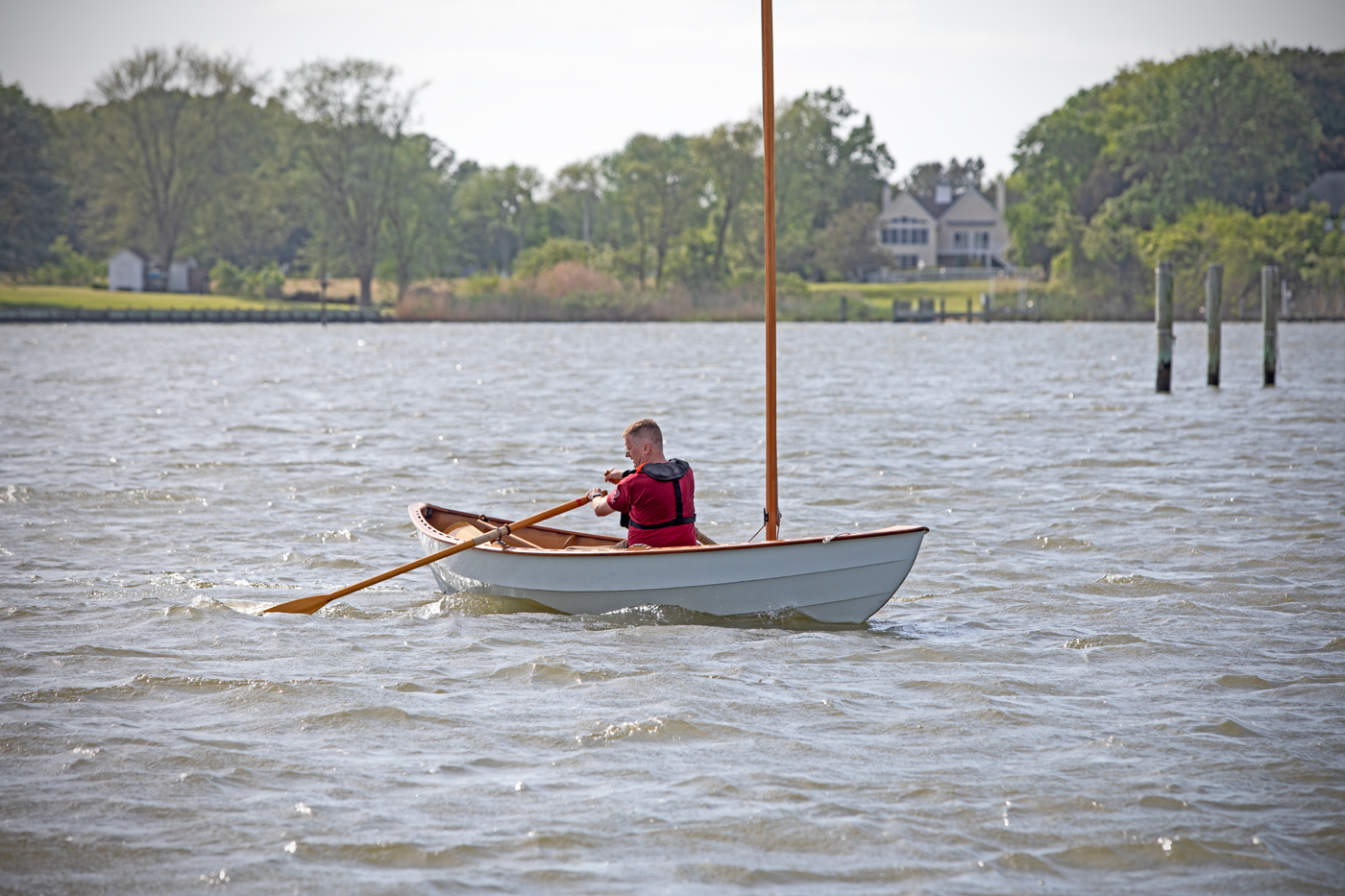 |
|
No discussion of the Skerry would be complete without mention of her sublime qualities as a rowing boat. She's perfectly happy to be rowed all day, wind or no wind. |
 |
|
A second rowing station keeps the Skerry in trim when a passenger is aboard. This photo dates to 2002. Both of the crew members mugging for the camera—myself and Brian Schmidt, CLC Fulfilment Manager—are still at CLC, 22 years later. |
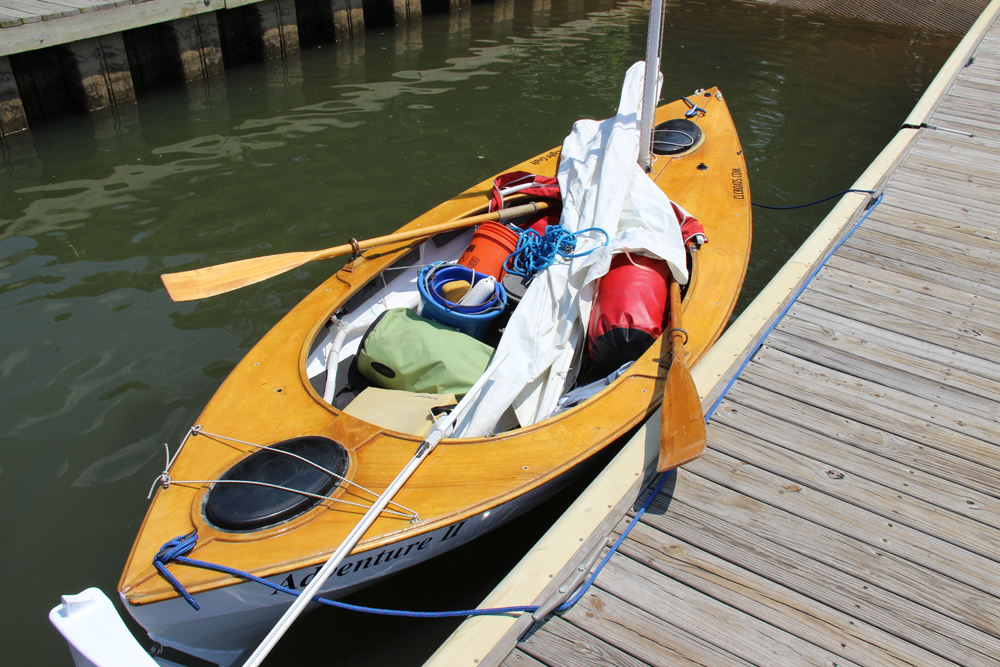 |
|
Absolutely no one has spent as much time rowing a Skerry or Skerry Raid as adventurer John Guider. He rowed and sailed his Skerry Raid 6500 miles, completing the "Great Loop." John also inspired the design of the "Grand Skerry," named, naturally enough, "The Guider." The Guider shows what you do when you take the Skerry's design brief and remove any concerns about cost and complexity. You get a very capable boat! |
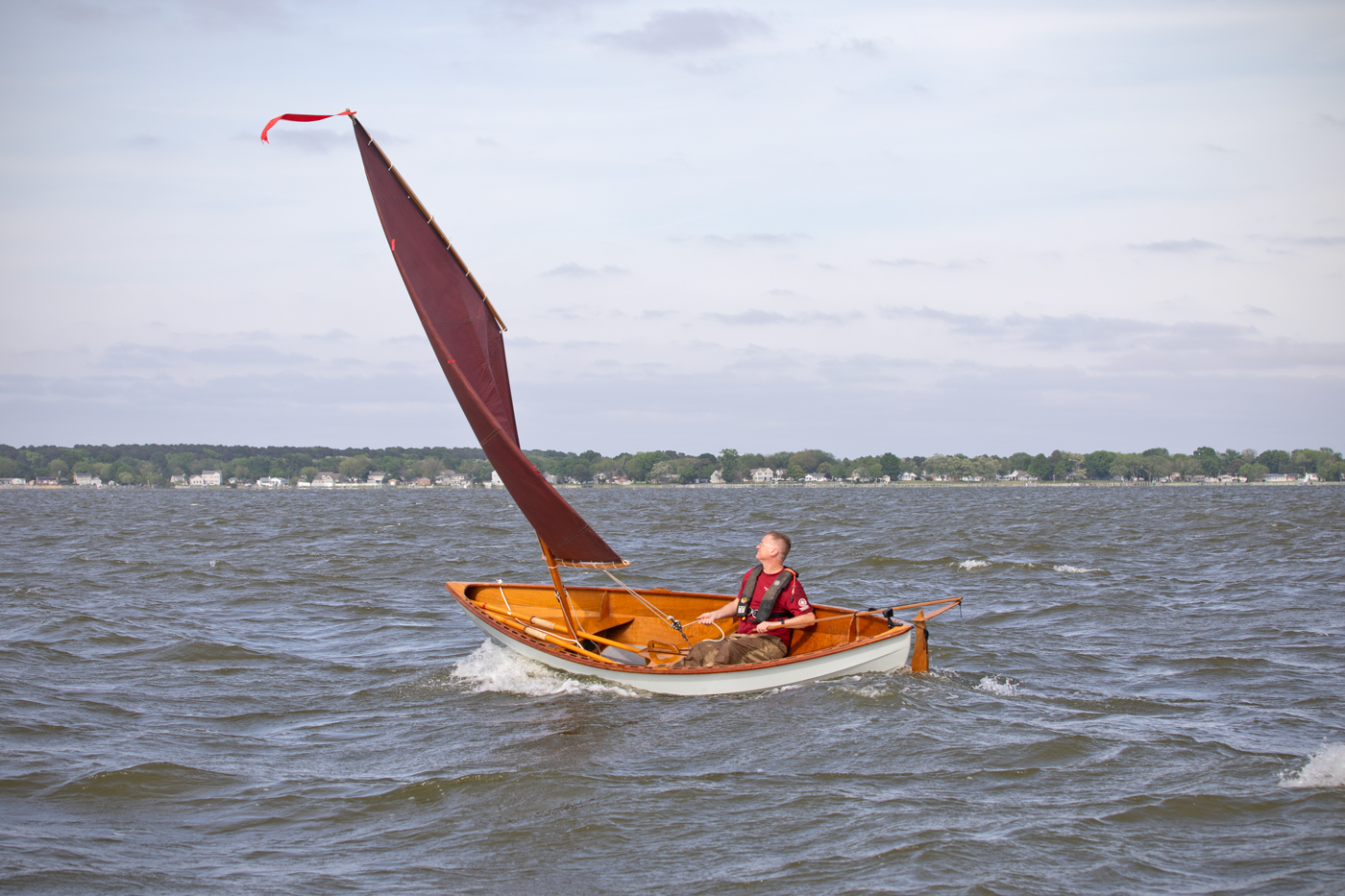 |
|
Just a fine small boat, to take you across the harbor or across the bay. |


 return to section:
return to section: 










